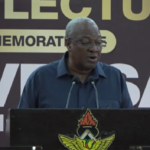US Secretary of State Antony Blinken has arrived in Israel in his latest effort to push for a ceasefire and hostage-release deal in Gaza.
His ninth trip to the region since the war began in October comes days after the US presented a modified proposal aimed at bridging long-standing gaps between the two sides.
The US has expressed optimism about a deal since talks resumed in Doha last week, but Hamas says suggestions of progress are an “illusion”.
Differences are said to include whether Israeli troops will be required to withdraw fully from the Gaza Strip, as Hamas insists.
Mr Blinken will attempt to maintain pressure on the Israeli leader when they meet on Monday – he will say that now is the moment to drop any more attempts to squeeze out last concessions and take a deal.
On the way here one senior US official was using phrases including a critical moment and an inflection point.
The Americans hope they can get this over the finish line perhaps as soon as this time next week.
But that level of optimism is not shared by the Israeli leadership or Hamas.
Each accuses the other of obstinate cynicism, and blocking a deal.
In a statement on Sunday, Hamas accused Israeli Prime Minister Benjamin Netanyahu of putting “obstacles” in the way of an agreement and “setting new conditions and demands” with the aim of “prolonging the war”.
It added it holds him “fully responsible” for thwarting mediators’ efforts and “obstructing an agreement”.
A Hamas source earlier told Saudi media that the proposals include the IDF maintaining a reduced presence along the Philadelphi Corridor, a narrow strip of land along Gaza’s southern border with Egypt.
But Israeli sources have told the Times of Israel, external that other procedures along the border could compensate for an Israeli withdrawal from the area in the first phase of the deal.
The Israeli military launched a campaign in Gaza to destroy Hamas in response to an unprecedented attack on southern Israel on 7 October, during which about 1,200 people were killed and 251 taken hostage.
More than 40,000 people have been killed in Gaza since then, according to the territory’s Hamas-run health ministry.
A ceasefire deal agreed in November saw Hamas release 105 of the hostages in return for a week-long ceasefire and the freeing of some 240 Palestinian prisoners in Israeli jails. Israel says 111 hostages are still being held, 39 of whom are presumed dead.
US President Joe Biden said earlier this week “we are closer than we have ever been” to a deal.
But previous optimism expressed during months of on-off talks has proven unfounded.
Mr Netanyahu told a cabinet meeting on Sunday that complex negotiations were taking place to secure the return of hostages, but some principles needed to be upheld for Israel’s security.
“There are things we can be flexible about, and there are things we cannot be flexible about, and we insist on them. We know very well how to differentiate between the two,” he said.
He also accused Hamas of being “obstinate” in negotiations and called for further pressure to be applied on the militant group.
A senior Hamas official told the BBC on Saturday: “What we have received from the mediators is very disappointing. There has been no progress.”
It is possible the public statements of defiance are mainly a negotiating tactic – but there is such significant enmity and distrust here that a week feels very optimistic for a breakthrough.
And the US pressure also has the timing of Washington’s electoral politics in the background. It feels like the countdown clock for a deal is ticking that bit faster for the Americans than it has been for the two sides in this agreement.
The original deal outlined by President Biden, based on Israel’s 27 May proposal, was to run in three phases:
-
The first would include a “full and complete ceasefire” lasting six weeks, the withdrawal of Israeli forces from all populated areas of Gaza, and the exchange of some of the hostages – including women, the elderly and the sick or wounded – for Palestinian prisoners held in Israel.
-
The second phase would involve the release of all other living hostages and a “permanent end to hostilities”.
-
The third would see the start of a major reconstruction plan for Gaza and the return of dead hostages’ remains.
Meanwhile, the Hamas-run health authority in Gaza says Israeli air strikes killed at least 21 people including six children on Sunday.
The IDF said on Sunday it had destroyed rocket launchers used to hit Israel from the southern Gaza city of Khan Younis, the scene of intense fighting in recent weeks, and killed 20 Palestinians.
















